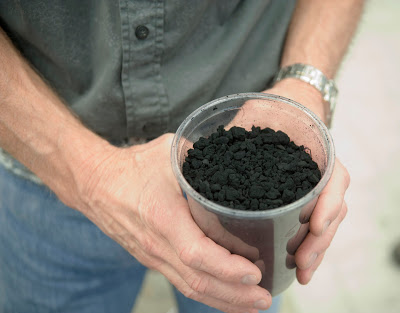
Breaking News
 John Solomon at Real America's Voice: Charlie Kirk is DEAD at 31! God Rest His Soul!
John Solomon at Real America's Voice: Charlie Kirk is DEAD at 31! God Rest His Soul!
 UPDATE: Suspect Who SHOT Charlie Kirk STILL AT LARGE...
UPDATE: Suspect Who SHOT Charlie Kirk STILL AT LARGE...
 At least 3 injured in shooting at Evergreen High School
At least 3 injured in shooting at Evergreen High School
 Chaffetz recounts terrifying moment Charlie Kirk was shot
Chaffetz recounts terrifying moment Charlie Kirk was shot
Top Tech News
 Methylene chloride (CH2Cl?) and acetone (C?H?O) create a powerful paint remover...
Methylene chloride (CH2Cl?) and acetone (C?H?O) create a powerful paint remover...
 Engineer Builds His Own X-Ray After Hospital Charges Him $69K
Engineer Builds His Own X-Ray After Hospital Charges Him $69K
 Researchers create 2D nanomaterials with up to nine metals for extreme conditions
Researchers create 2D nanomaterials with up to nine metals for extreme conditions
 The Evolution of Electric Motors: From Bulky to Lightweight, Efficient Powerhouses
The Evolution of Electric Motors: From Bulky to Lightweight, Efficient Powerhouses
 3D-Printing 'Glue Gun' Can Repair Bone Fractures During Surgery Filling-in the Gaps Around..
3D-Printing 'Glue Gun' Can Repair Bone Fractures During Surgery Filling-in the Gaps Around..
 Kevlar-like EV battery material dissolves after use to recycle itself
Kevlar-like EV battery material dissolves after use to recycle itself
 Laser connects plane and satellite in breakthrough air-to-space link
Laser connects plane and satellite in breakthrough air-to-space link
 Lucid Motors' World-Leading Electric Powertrain Breakdown with Emad Dlala and Eric Bach
Lucid Motors' World-Leading Electric Powertrain Breakdown with Emad Dlala and Eric Bach
 Murder, UFOs & Antigravity Tech -- What's Really Happening at Huntsville, Alabama's Space Po
Murder, UFOs & Antigravity Tech -- What's Really Happening at Huntsville, Alabama's Space Po
Physicists patent detonation technique to mass-produce graphene

Their method is simple: Fill a chamber with acetylene or ethylene gas and oxygen. Use a vehicle spark plug to create a contained detonation. Collect the graphene that forms afterward.
Chris Sorensen, Cortelyou-Rust university distinguished professor of physics, is the lead inventor of the recently issued patent, "Process for high-yield production of graphene via detonation of carbon-containing material." Other Kansas State University researchers involved include Arjun Nepal, postdoctoral researcher and instructor of physics, and Gajendra Prasad Singh, former visiting scientist.
"We have discovered a viable process to make graphene," Sorensen said. "Our process has many positive properties, from the economic feasibility, the possibility for large-scale production and the lack of nasty chemicals. What might be the best property of all is that the energy required to make a gram of graphene through our process is much less than other processes because all it takes is a single spark."

 Tiny briefcase engine boosts EV range beyond battery power
Tiny briefcase engine boosts EV range beyond battery power 

